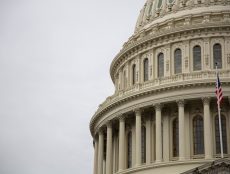
Articles
Editor’s Picks
How American Colleges Allocate Funds and Resources: Update 2019
By Henry Kronk
November 02, 2019
A college degree for many Americans is both a gateway to a professional career and the single largest source of debt they carry. But how are things looking on the other side of the coin? One of eLearning Inside’s most evergreen articles has proven to be an analysis of how American institutions of higher education earn revenue and allocate resources. Since our first article in 2018, we have provided a 2019 update focusing only on revenue. This article, also using updated data, digs into how American colleges and university allocate funds and resources.
The following insights derive from data compiled by the National Center for Education Statistics (NCES) via the Integrated Postsecondary Education Data System (IPEDS), which operate under the U.S. Department of Education. American colleges and universities are required to report various data about their institutions to the DoE in order to receive Title IV funding. This data describes FY 2017, the latest from which information is available.
This article focuses primarily on public four-year and two-year institutions and private non-profit four-year colleges because, together, they teach the largest swath of American undergrad students. In 2017, 8.85 million Americans attended a four-year public institution. 5.77 million attended a public two-year college, while 4.06 studied at a private four-year school. These learners formed 18.70 million of the 20.14 million learners who attended Title IV degree-granting institutions in 2017.
Overview of American Colleges’ Expenses
Boosted by a year that saw favorable returns on investment, FY 2017 was a record year for public and private institutions. Public four-year institutions earned $321.74 billion, public two-years saw revenue of $56 billion, while private non-profits netted $242.87 billion collectively. Check out our previous post for a detailed rundown of these earnings.
In terms of expenses, a few broad points can be painted. For one, four-year public universities operate with slimmer margins. Of the $321.74 billion in FY 2017 revenue, they spent $305.32 billion of it in the same year.
By contrast, private non-profits spent $196.37 billion of the $242.87 billion they earned. Two-year public schools, however, have the slimmest margins of all. They spent $54.73 billion of $56 billion they took in.
The Cost of Instruction
If students are consumers, then the average American undergrad might want to learn how far their tuition dollars are going towards their own instruction. Public four-year universities spent $86.56 billion to instruct their students in 2017, which took up 28.3% of their total expenses.
That means that public universities spent an average of $9,780 per student on instruction.
By contrast, private non-profits spent $61.90 billion on instruction, which represented 31.5% of their total expenses. This translates into just over $15,000 spent on instruction per student.
With $22.78 billion spent on instruction, two-year public schools averaged just under $4,000 per student.
These numbers come into greater focus, however, when one considers how much students pay on average in tuition. According to The College Board, the average published tuition and fees at public four-year colleges in the 2017-18 school year were $10,270. At non-profits, it was $35,720.
Keep in mind that this represents published tuition. What most students paid will actually be lower.
But when comparing expenses from instruction versus published tuition, public university students get more bang for their buck. This also only represents averages. Many institutions—both public and private—spend far more on instruction than they charge for tuition. The Century Foundation provides a more detailed rundown of this phenomenon.
Other Significant Expenses
At public four-year institutions, learners don’t only benefit from funds spent on instruction. These schools also spent $25.5 billion (8.3% of total) on academic support and $14.72 billion (4.8% of total) on student services. With expenses of $35.44 billion, research took up 11.6% of total four-year public expenses.
Notably, in 2017, the expense of institutional support drew roughly even with research. Back in 2010, the latter took up over $3 billion more in expenses than the former.
Auxillary enterprises claimed $30.17 billion (9.9%), and institutional support cost $25.87 billion (8.5%).
Behind instruction, however, hospital services claimed the second most amount of resources at $45.19 billion (14.8%) of total. Public university hospitals are also responsible for a large portion of their revenue. They brought in $46.16 billion in 2017, making up 14.3% of total revenue.
But in this sense, one might expand one’s understanding of the public good that public universities deliver. Besides spending more on students than they receive from tuition in many cases, they’re also just breaking even with the hospitals they run.
Private non-profit colleges run hospitals too—but with different margins. In 2017, they spent just under $24 billion on hospital services (12.2% of total) and turned that in to $26.73 billion in profit (11.1% of total). So while hospitals are roughly half as big at private colleges compared to public universities in terms of expenses, private non-profits net twice as much from them as their public counterparts.
Scholarships, Fellowships, and Aid
For both public and private schools, almost every single expense has risen steadily since 2010, according to the NCES’ data aggregator. (This tool compiles data since 2010 for public schools and since 2002 for private non-profits.) But scholarships and fellowships at public schools and net grant aid at private non-profits form an exception.
Public schools spent $17.54 billion on scholarships and fellowships in 2011. By 2017, the figure steadily shrank to $15.42 billion. Back in 2002, private non-profits paid $1.19 billion in net grant aid. By 2017, the expense was down $947.3 million. In this later example, changes to NCES accounting guidance likely explains the drop.
Private non-profits have various ways of discounting tuition for students, and tend to do so liberally. In the 2011-12 school year, private non-profits granted an average discount of $17,040 to every student who received any Title IV aid.
Staff and Personnel
Instruction, research, student support, academic support, hospital services—these all require employees to operate. In 2017, institutions of higher education employed just under 4 million full-time and part-time workers. This figure is down from 4.13 million employees in 2014, but, over the long-term, way up from 3.21 million in 2002.
The number of full-time instructional staff, however, has risen steadily over this period from just under 515,000 in 2002 to just under 625,000 in 2017. These figures add another fold to the conversation around tenured professorships in the U.S. While the percentage of full-time tenured professors or full-time tenure-track professors is shrinking, the total volume of tenured professors has, in fact, risen steadily for some time. (The number has almost doubled since 1976.)
Many instruction roles have been filled by adjunct professors on a part-time or full-time contract basis. But it’s false to suggest that the number of full-time instructors at degree-granting schools has shrunk. In reality, their expansion has proven consistent despite economic fluctuations like the Great Recession or the DotCom Bubble.
There is a large disparity, however, between full-time and part-time instructional staff depending on the type of institution. Public universities hired 317,000 full-time staff compared to just under 200,000 part-time. But at private institutions, there are more part-time instructional staff on the payroll (198,000) compared to full-time (190,000).
Conclusion
Institutions of higher education are fascinating and nuanced economic entities that tend to be painted with broad brush strokes. In most instances, generalizations about higher education obscure complicating nuances. While student debt is paralyzing millions of American families, few know that many universities actually would be losing money if they didn’t find support mechanisms outside of tuition and fees.
In an address earlier this year, Senate HELP Committee Chairman and former Secretary of Education Lamar Alexander (R-Tenn.) described the G.I. Bill and it’s numerous follow ups of federal and state support of American higher education as both one of the most liberal and most successful government initiatives in U.S. history. It’s difficult to appreciate that reality without getting a glimpse of the sources of revenue and expenses in institutions of higher education.
Featured Image: COD Newsroom, Flickr.









[…] which built an office sub-leasing empire under the leadership of co-founder and former CEO Adam Neumann, has been in a tail slide since it […]
[…] students, especially those taking up their masters, have found great value in workspaces offered by WeWork, Novel Coworking, and […]